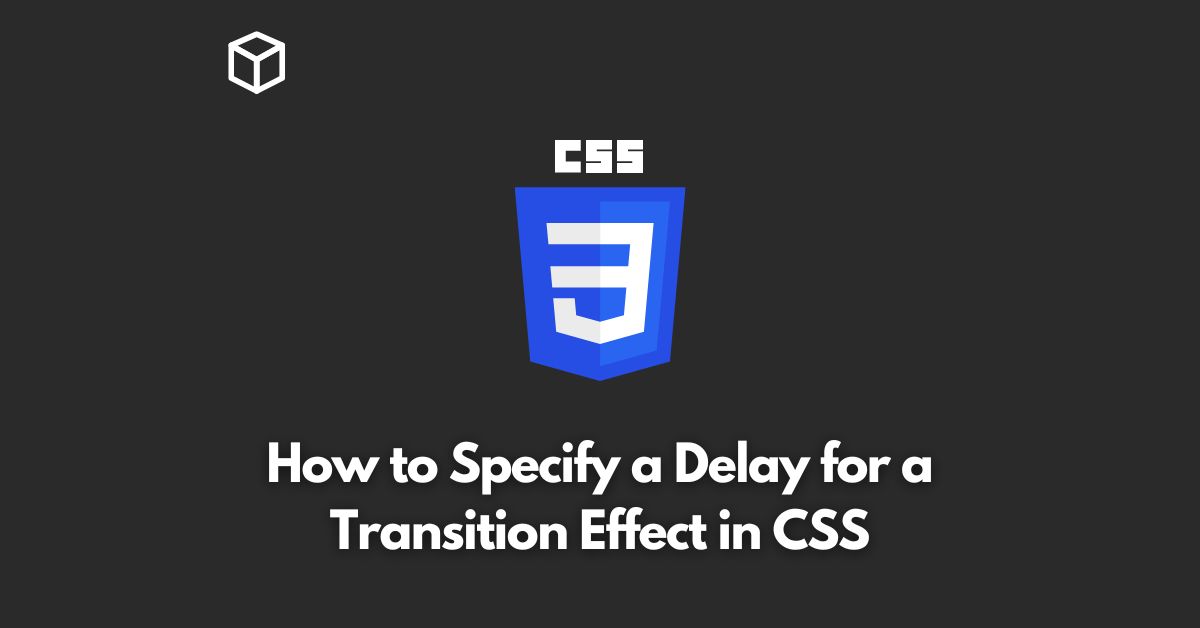CSS (Cascading Style Sheets) is a powerful tool that web developers use to make their websites look beautiful and interactive.
One of the most popular features of CSS is the ability to create transition effects that change the way elements look when the user interacts with them.
In this CSS tutorial, we will be discussing how to specify a delay for a transition effect in CSS.
Introduction
Transition effects are used to smoothly change the appearance of an element when the user interacts with it.
For example, when a user hovers over a button, the background color can change from one color to another.
These effects are created using the CSS transition property.
One of the most important aspects of creating a transition effect is timing.
In this CSS tutorial, we will be discussing how to specify a delay for a transition effect in CSS.
Specifying a Delay
To specify a delay for a transition effect, you can use the transition-delay property.
This property allows you to set the amount of time that should pass before the transition effect begins.
The value of the transition-delay property is specified in seconds (s) or milliseconds (ms).
For example, if you want to set a delay of 2 seconds before a transition effect begins, you would use the following code:
example {
transition: background-color 2s;
transition-delay: 2s;
}In this example, the transition effect will begin 2 seconds after the user interacts with the element.
Multiple Transitions
If you want to create multiple transition effects for the same element, you can use the transition property multiple times.
For example, if you want to create a transition effect for both the background color and the font size, you would use the following code:
example {
transition: background-color 2s, font-size 2s;
transition-delay: 2s;
}In this example, both the background color and the font size will transition with a delay of 2 seconds.
Conclusion
CSS transition effects are a great way to make your website more interactive and engaging.
By using the transition-delay property, you can specify the amount of time that should pass before the transition effect begins.
This allows you to create more complex and dynamic effects that are timed perfectly to enhance the user experience.
With this knowledge, you can create more dynamic and interactive websites that engage your users.
It’s important to note that delay is not only useful in hover effects but also in other types of interactions like focus, active and etc.
You can use this property along with the other CSS properties like transition-duration, transition-property, and transition-timing-function to create more complex animation.




